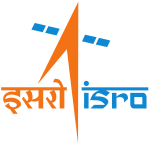Thumba Equatorial Rocket Launching Station
Thumba Equatorial Rocket Launching Station
From Wikipedia, the free encyclopedia
| Thumba Equatorial Rocket Launching Station | |
|---|---|
 | |
| Launch of RH-300 Mk2 from TERLS | |
| Agency overview | |
| Formed | November 21, 1963 |
| Jurisdiction | Indian federal government |
| Headquarters | Thumba, Thiruvananthapuram, India 8°32′34″N 76°51′32″E |
| Employees | Unknown (2008) |
| Annual budget | See ISRO |
| Parent Agency | ISRO |
| Website | |
| ISRO TERLS home page | |
The Thumba Equatorial Rocket Launching Station (TERLS) is an Indian spaceport operated by the Indian Space Research Organization. It is located in Thumba, Thiruvananthapuram which is near the southern tip of mainland India, very close to earth's magnetic equator. It currently used by ISRO for launching sounding rockets.
Contents[hide] |
[edit]Location
Thumba is located very close the magnetic equator of the Earth (located just north of Thumba), making it the ideal location for scientists to conduct atmospheric research. In fact, Thumba's location at 8°32'34" N and 76°51'32" E is ideal for low-altitude, upper atmosphere and ionosphere studies. Thumba is a small fishing village situated close to the Thiruvananthapuram airport in Kerala.[1]
[edit]History
In 1962, the Indian National Committee for Space Research (INCOSPAR) was established. Homi Bhabha, then the father of India's nuclear program, along with Vikram Sarabhai, took into consideration number of sites situated in Kerala to construct a rocket station. After long discussion they both finalized Thumba as the appropriate place. Thumba is a small village, until then, known only for fishing situated near theThiruvananthapuram airport in Kerala.[2]
The newly built rocket launching pad was set amidst coconut groves. A local Catholic church, the St Mary Magadelene's Church served as the main office for the scientists. The bishop's house was converted into a workshop. A cattle shed became the laboratory in which the young Indian scientists worked on the first sounding rockets. Upon launching the first sounding rocket (Nike-Apache) on 21 Nov 1963, Prof. Sarabhai shared with his team his dream of an Indian Satellite Launch Vehicle. Over the next 12 years, the United States, Britain, France and the USSR helped India build and launch more than 350 sounding rockets from Thumba.[3]
The Rohini Sounding Rocket (RSR) program to develop indigenously developed and fabricated sounding rockets launched the first single-stage Rohini (RH-75) rocket (32 kg rocket with 7 kg payload to ~10 km altitude) in 1967, followed by a two-stage Rohini rocket (100 kg payload to over 320 km altitude).[4]
[edit]Facilities
When TERLS was first established, it had a single launch pad in the midst of coconut plantations. The St Mary Magadelene's Church served as the main office for the scientists. The bishop's house was converted into a workshop. A cattle shed became the laboratory in which young Indian scientists like Abdul Kalam worked on the first sounding rockets.
Subsequently, TERLS developed infrastructure for all aspects of rocketry, ranging from rocket design, rocket propellant, rocket motor casting, integration, payload-assembly, testing, evaluation besides building subsystems like payload housing and nose cones which could be jettisoned. Fiber Reinforced Plastics composite materials for nosecone were used in early programs at TERLS.
Presently the site has the capability to launch rockets up to 0.56 metres in diameter. The three launch pads at the Thumba Equatorial Rocket Launching Station have facilities for a variety of sounding rockets, including the French Centaure Dragon, the Indian Centaure and Rohini, Britain's Skua and Petrel, America's Nike-Apache, Nike-Tomahawk and Arcas and Russia's M-100.
[edit]Vikram Sarabhai Space Centre
After the death of Dr. Vikram Sarabhai on December 30, 1971, the whole space establishment at Thiruvananthapuram was rechristened as Vikram Sarabhai Space Centre. Over the last four decades VSSC has matured into a centre of excellence in launch vehicle technology.[

Comments
Post a Comment